#Marabou Stork
Explore tagged Tumblr posts
Text

A marabou stork (Leptoptilos crumenifer) perches in a tree in Maasai Mara National Reserve, Kenya
by praveen pandian
#marabou stork#storks#birds#leptoptilos crumenifer#leptoptilos#ciconiidae#ciconiiformes#aves#chordata#wildlife: kenya#wildlife: africa
117 notes
·
View notes
Text
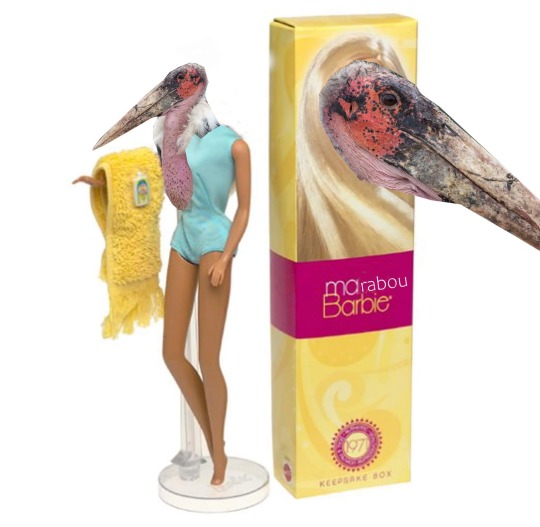
They’re literally flying off the shelves
1K notes
·
View notes
Text

marabou stork i love you ugly bird
116 notes
·
View notes
Text

Pierre Bonnard (France, 1867–1947)
Marabou Stork and Four Frogs (Le marabout et les quatre grenouilles), 1889
Three-panel screen; distemper paint on canvas, 62 3/4 × 21 1/2 in.
The Nabi Collection of Vicki and Roger Sant
#animals in art#european art#birds in art#bird#19th century art#painting#frog#frogs#stork#Marabou Stork#Pierre Bonnard#French art#post impressionism#Nabi art#japonisme
45 notes
·
View notes
Text

scooping him sunday
24 notes
·
View notes
Text
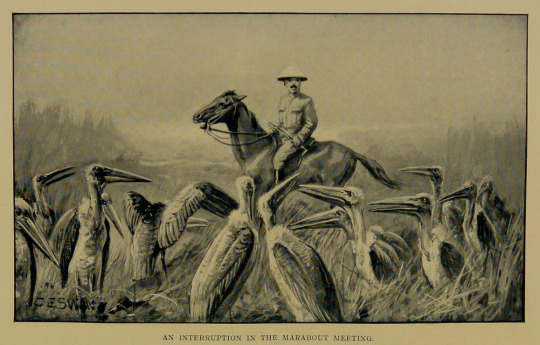
Wild Animals of Yesterday & To-Day. Written by Frank Finn. Illustrated by Cuthbert Edmund Swan. 1913.
Internet Archive
81 notes
·
View notes
Text

Oh hey, I forgot to post this last month!
Art night challenge with @rachelannmillar to make an ugly critter cute and Christmassy. I went with the Marabou Stork because that big ol' wrinkled wattle is intense.
Love his little smile.
25 notes
·
View notes
Text

53 notes
·
View notes
Text

Guy who definitely does not eat the specimens out of the prosectorium.
#furry#furry art#my art#digital art#illustration#artists on tumblr#digital illustration#oc art#original character#character sketch#character design#art#furry oc#anthro#furries#anthro art#anthropomorphic#bird furry#marabou stork#oc: oliver hinton
50 notes
·
View notes
Text
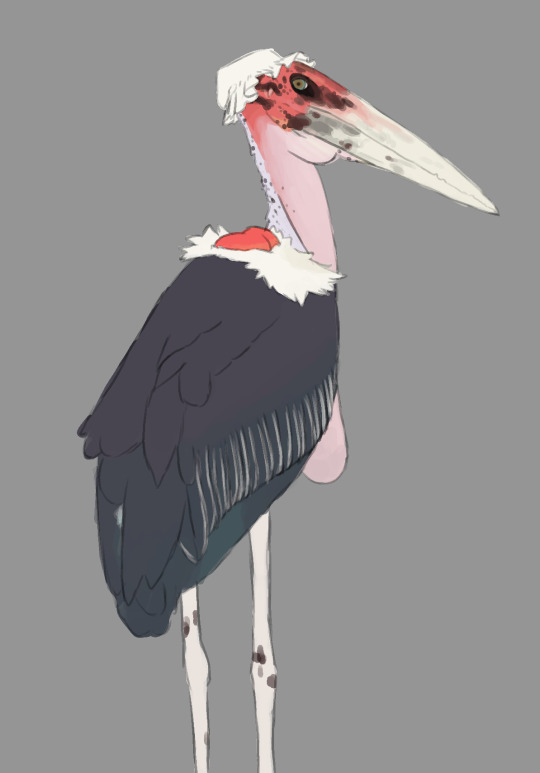
marabou hearn
#maribel hearn#merry hearn#yukaribel#own art#touhou#touhou project#marabou stork#hifuus as creatures
50 notes
·
View notes
Text
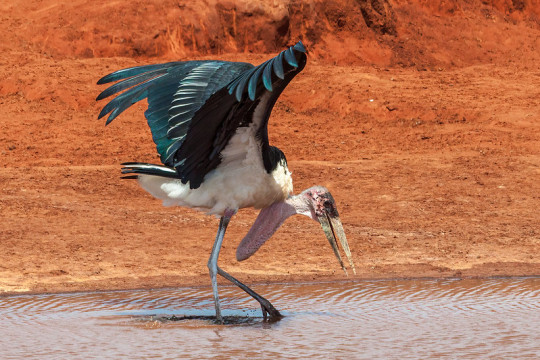
A marabou stork (Leptoptilus crumenifer) in Tsavo National Park, Kenya
by Dale Harding
#marabou stork#storks#birds#leptoptilus crumenifer#leptoptilus#ciconiidae#ciconiiformes#aves#chordata#wildlife: kenya#wildlife: africa
79 notes
·
View notes
Text


Today's Bird of the Day is the Marabou Stork
The Marabou Stork (Leptoptilos crumenifer) is a large African wading bird, known for its bald head, massive beak, and pink throat pouch. Reaching heights of up to 5 feet and boasting a wingspan of 12 feet, it is among the largest storks. A skilled scavenger, it feeds on carrion, small animals, and refuse, playing a vital ecological role in waste cleanup. Found across sub-Saharan Africa, Marabou Storks thrive in wetlands, savannas, and urban areas. Though often seen as unattractive, their scavenging helps control disease. Despite habitat challenges, they are listed as Least Concern by the IUCN due to their adaptability.
Read more here
Photo taken by me at this location
#birds#birdblr#bird photography#bird#birding#birdwatching#birders#bird of the day#bird watching#stork#marabou stork
7 notes
·
View notes
Text
I feel like I have seen a bunch of posts going on around Marabou Storks and how creepy and weird they are, with the garbage eating, huge throat sac and such, but some how I haven't seen anyone bring this up?!

Sure people bring up the title "Undertaker Bird," but don't mention that this looks like a person from behind! You see this thing standing before a corpse, and when you go up to them thinking they are a person, they just turn around and you get bloody bald corpse eater bird. Yeah, the stories and legends write themselves at that point.
83 notes
·
View notes
Text
For #WorldStorkDay :
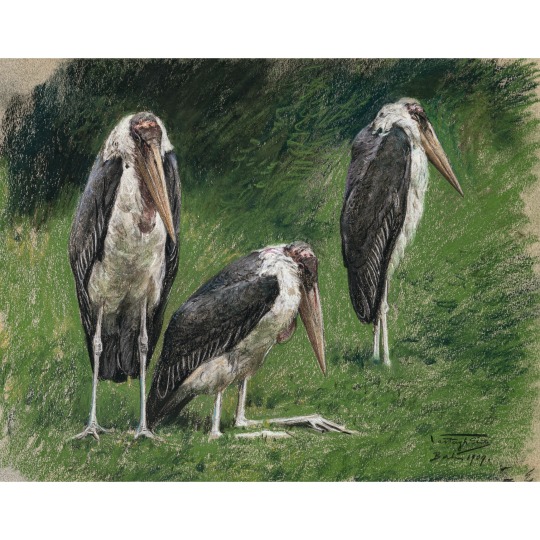
Géza Vastagh (Hungarian, 1866–1919)
Three Marabous, 1909
pastel on cardboard
H 38 x W 48.5cm
Private Collection
🆔 Marabou Stork (Leptoptilos crumenifer), native to sub-Saharan Africa.
“[Vastagh’s] work is dominated by animal depictions, especially lions, but the animals of the Hungarian Puszta also influenced his work. With a government scholarship he traveled to North Africa, Algeria and Tunis in 1898 and was able to portray the animals in their natural habitat. He also found his motifs in the zoos of Berlin, Hamburg and Leipzig.”
#animals in art#animal holiday#european art#20th century art#birds in art#bird#birds#stork#Marabou Stork#African animals#pastel#drawing#Géza Vastagh#Hungarian art#World Stork Day#species ID
55 notes
·
View notes
Text
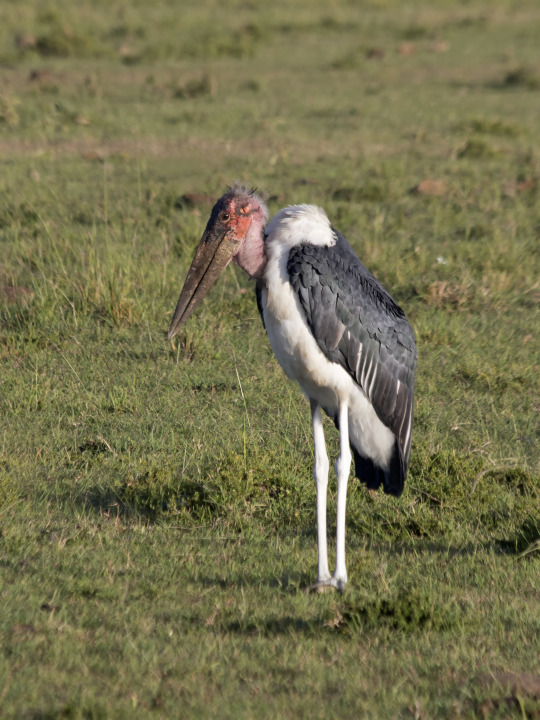
Marabou stork! A very big bird which scavenges with the best of them.
Masai Mara, Kenya, July 2023
#bird#marabou stork#kenya#scavenger#photographers on tumblr#textless#amadee ricketts#marabou as in feathers is named after this bird#for reasons#but now marabou is made from turkey feathers#which doesn't seem nice either
71 notes
·
View notes
Text
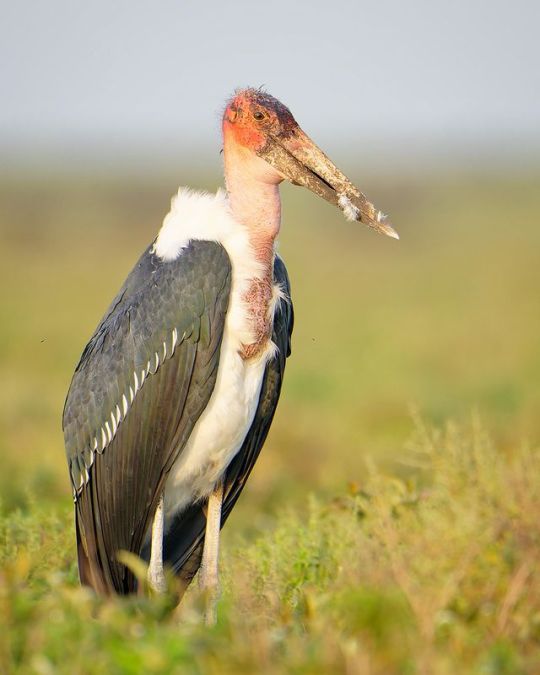
Marabou Stork
69 notes
·
View notes